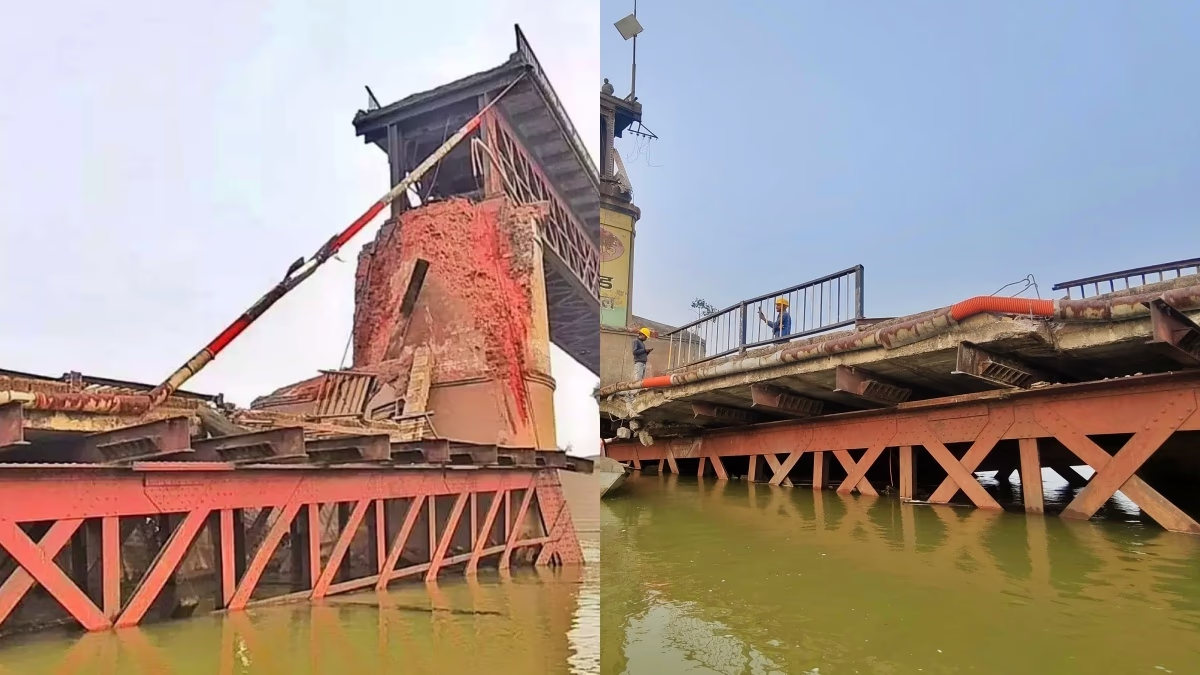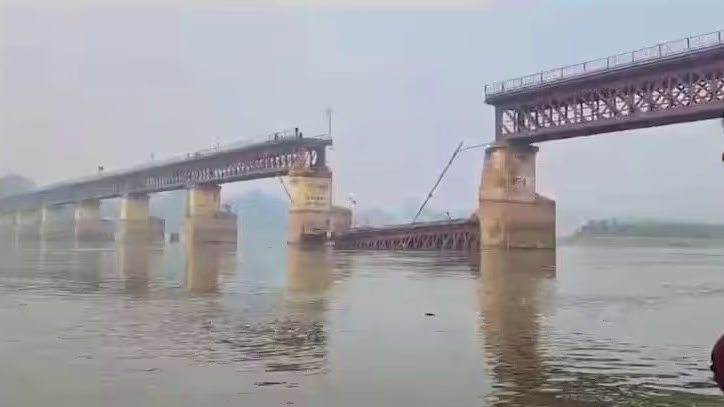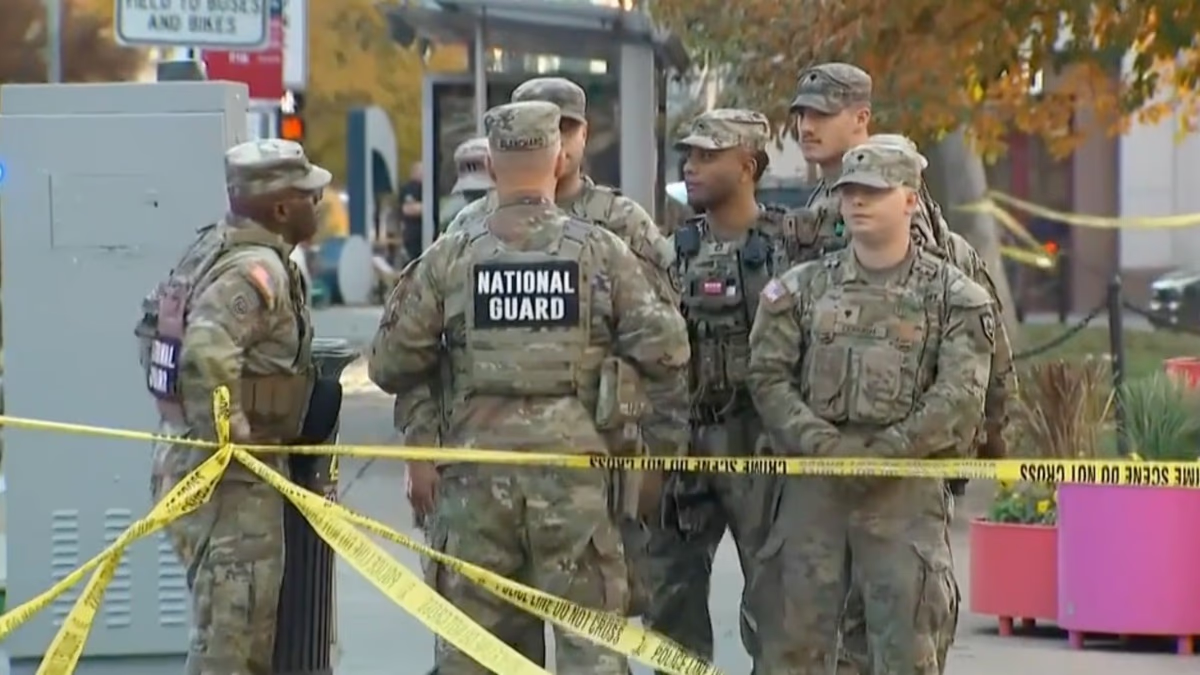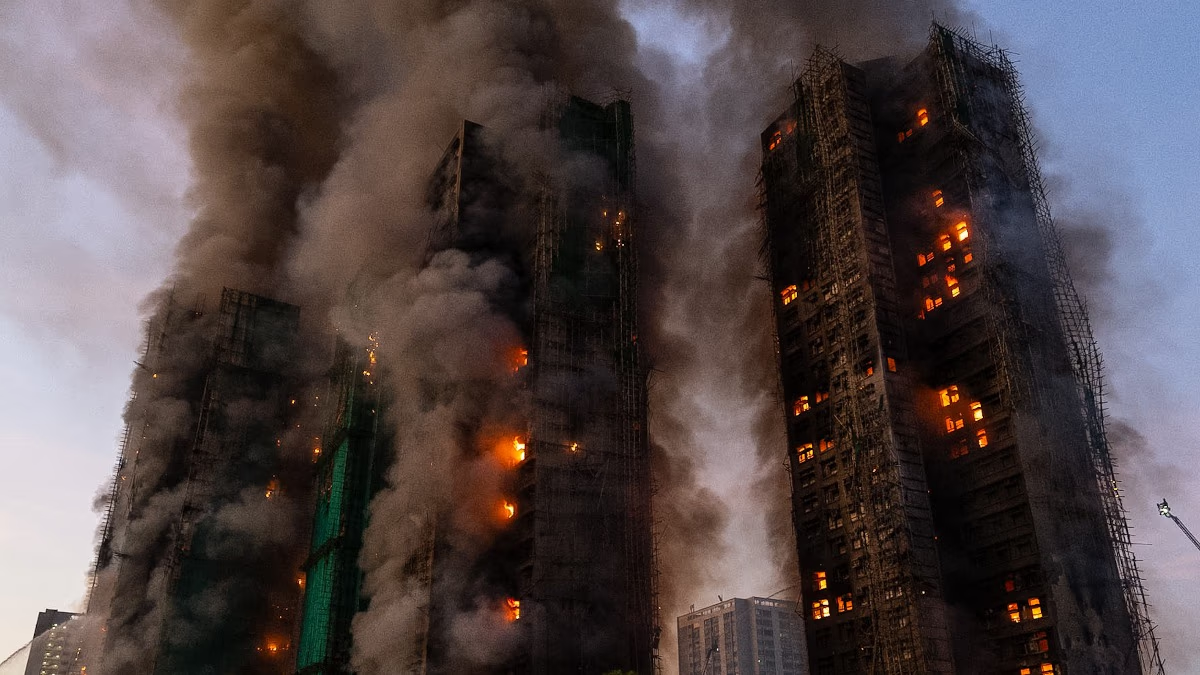This morning, a section of the over 150-year-old Ganga Bridge in Kanpur crumbled into the river. Once a vital link between Kanpur and Lucknow, this bridge stood as a witness to the freedom struggle. However, the Kanpur administration had closed it to public traffic four years ago due to safety concerns.
The historical importance of this bridge led the municipal corporation to maintain it. Millions were spent on its beautification to present it as a heritage site. Nevertheless, on Tuesday, about 80 feet of the bridge collapsed into the Ganges.

Source: aajtak
The Ganga Bridge was unique for allowing vehicles on top, while cyclists and pedestrians used the lower path. History tells that during the British era, this bridge was the only route from Kanpur to Lucknow, with travelers moving from Kanpur to Unnao, then entering Lucknow. Due to visible cracks in its pillars, the bridge was deemed unsafe and closed to protect public safety, with walls erected at both ends in Shuklaganj and Kanpur.
A Bridge Witness to the Freedom Struggle
This British-era bridge over the Ganga between Kanpur and Shuklaganj bore witness to the freedom struggle. One notable incident was when British forces fired upon revolutionaries crossing the river.
After its closure years ago, the lives of over a million people living in Shuklaganj, Unnao were affected. Efforts by MPs, MLAs, and ministers to reopen it fell short after Kanpur IIT declared it dilapidated and unsafe for use.
The administration firmly refused to reopen the bridge. The collapse this morning confirmed fears, enforcing a complete closure of the site. Authorities have cordoned off the area, preventing visits from curious onlookers.
Built in 1875
The bridge's construction was commissioned by the British to connect Kanpur with Unnao-Lucknow in 1875, carried out by East India Company engineers. The project took 7 years and 4 months to complete. A plant was set up at Mascar Ghat for this purpose. In 1910, a nearby railway bridge was also constructed to facilitate train movement. Daily, it served 125,000 people with a traffic flow of 22,000 vehicles. At 12 meters wide and 1.38 kilometers long, it was a bustling thoroughfare.




